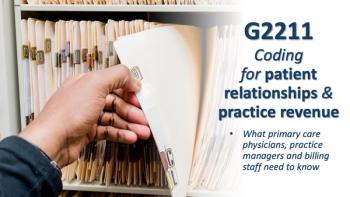
Ending the Physician Relationship with Pediatric Patients
Pediatrics is unique in that physicians have to push patients out of the nest so they can fly on their own. Here's how one doctor does it.
All medical practices have former patients. Some patients move away. Some die. Others have a switch in health insurance and need to change. Some even get angry with our practice for various reasons and switch.
Then there are the patients that are asked to leave. Often this concerns not paying their bills and occasionally it is due to egregious behavior toward staff members.
But pediatrics is very distinctive. While we have all of the above, we actively get rid of our patients when they become adults. This is bittersweet for all concerned.
I have been in this community long enough now to have “my babies” aging out of my pediatric practice. I have known many of these patients their entire lives and have watched them grow up. My observation of their progress has been in snapshots as they come to my office, both in sickness and in health. The parents are completely recognizable, however, the kids change so much, I often don’t recognize them unless I see them trailing behind their moms on the way into the office.
We have made the determination in our practice that our patients need to seek alternative medical care when they are somewhere between age 18 and age 20. This gets most patients up to and partially into college.
Many years ago, I decided that a patient no longer fits the pediatric practice parameters if he is:
• Married
• Working full time and not in school
• Has their own child
At this point, these patients have effectively entered “adult land” and have issues beyond what pediatric specialization should be dealing with. Of course, we have a few exceptions but in general this is my working definition of “not a pediatric patient.”
The adolescent patients that grow uncomfortable in the waiting room filled with small children have already transitioned themselves out. When we do have to ask patients to start the transition to an “adult” physician, most do not want to leave.
They have grown comfortable with us and know what to expect in our office. They often still have their mom or dad in the exam room with them (by their choice).
They don’t beg to stay with us, but the look in their eyes is very sad when they realize this is the last visit with us.
Recently I had the experience of one of my patients that towered over me by 15 inches. He is 6 foot 6.5 inches tall (and yes, he will be playing college basketball). He is the last of four children in a family that has been coming to our clinic for 25 years now!
I generally recommend switching to a family practice clinic. It seems a better transition than going to internal medicine as family physicians see both children and adults. But I do have several internists that are not only great with young adults they actually enjoy the change of pace from dealing mostly with older adults.
There are some patients that stay with us for an exceptionally long time. These patients are the severely handicapped patients that require as much caregiving as infants. Our oldest patient to date was a 26-year-old with cerebral palsy. It is especially sad for us to have to say goodbye to these special needs patients.
While it is difficult to start the conversation about having to seek other care, it is also with joy at now seeing the young adults they have become. Many are headed off to college. Some are planning work, then more schooling of some sort. Some of my young new mothers are ecstatic to bring their little ones to see “the doctor mommy had as a baby.” Boy, does that make me feel old!
Pediatrics is unique in that we have to push our patients out of the nest so they can fly on their own. Fortunately we continuously have new little ones to nurture along and start the process all over again.
Newsletter
Optimize your practice with the Physicians Practice newsletter, offering management pearls, leadership tips, and business strategies tailored for practice administrators and physicians of any specialty.




